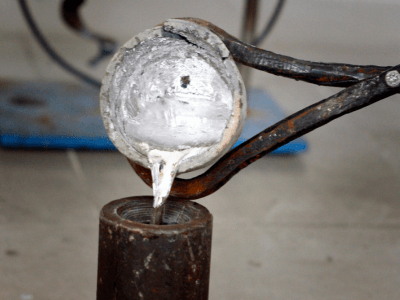Aluminum Casting
- Home
- Aluminum Casting
Aluminum Casting
Aluminum casting
Aluminum casting is a metal-forming process that utilizes aluminum alloys to create a wide range of components. Aluminum, with its low density and excellent corrosion resistance, is an ideal material for casting applications, especially when lightweight and intricate designs are essential.
Key Features of Aluminum Casting:
Lightweight:
- Aluminum is known for its low density, making cast aluminum components lightweight. This property is particularly advantageous in industries where weight reduction is a priority, such as automotive and aerospace.
Corrosion Resistance:
- Aluminum alloys naturally form a thin oxide layer on their surface, providing inherent corrosion resistance. This makes aluminum castings suitable for outdoor and marine applications.
High Thermal Conductivity:
- Aluminum has excellent thermal conductivity, making it suitable for applications where heat dissipation is crucial, such as in electronic components.
Design Flexibility:
- Aluminum casting allows for the production of intricate and complex designs, offering design flexibility for various industries.
Recyclability:
- Aluminum is highly recyclable, and the recycling process requires significantly less energy compared to the production of primary aluminum. This sustainability aspect makes aluminum casting an environmentally friendly choice.
The Aluminum Casting Process:
Pattern Making:
- The process begins with the creation of a pattern, usually made of wood, metal, or plastic. The pattern is a replica of the final product.
Mold Preparation:
- The pattern is used to form a mold, typically made of sand or other refractory materials. The mold will define the shape of the final casting.
Melting and Pouring:
- Aluminum or aluminum alloy is melted in a furnace at high temperatures.
- The molten aluminum is then poured into the prepared mold, filling the cavity.
Solidification:
- The molten aluminum cools and solidifies in the mold, taking the shape of the pattern.
Casting Removal and Finishing:
- Once solidified, the aluminum casting is removed from the mold.
- Various finishing processes, such as machining, heat treatment, and surface treatment, may be employed to achieve the desired final product.
Applications of Aluminum Casting:
Automotive Industry:
- Engine components, transmission cases, wheels, and various structural parts.
Aerospace Industry:
- Aircraft components, including structural parts and engine components.
Consumer Goods:
- Aluminum casting is used in the production of household items, such as cookware, light fixtures, and decorative items.
Electronics:
- Heat sinks, electronic housings, and components requiring thermal management.
Construction Industry:
- Aluminum casting is employed in the production of architectural components, window frames, and structural elements.
